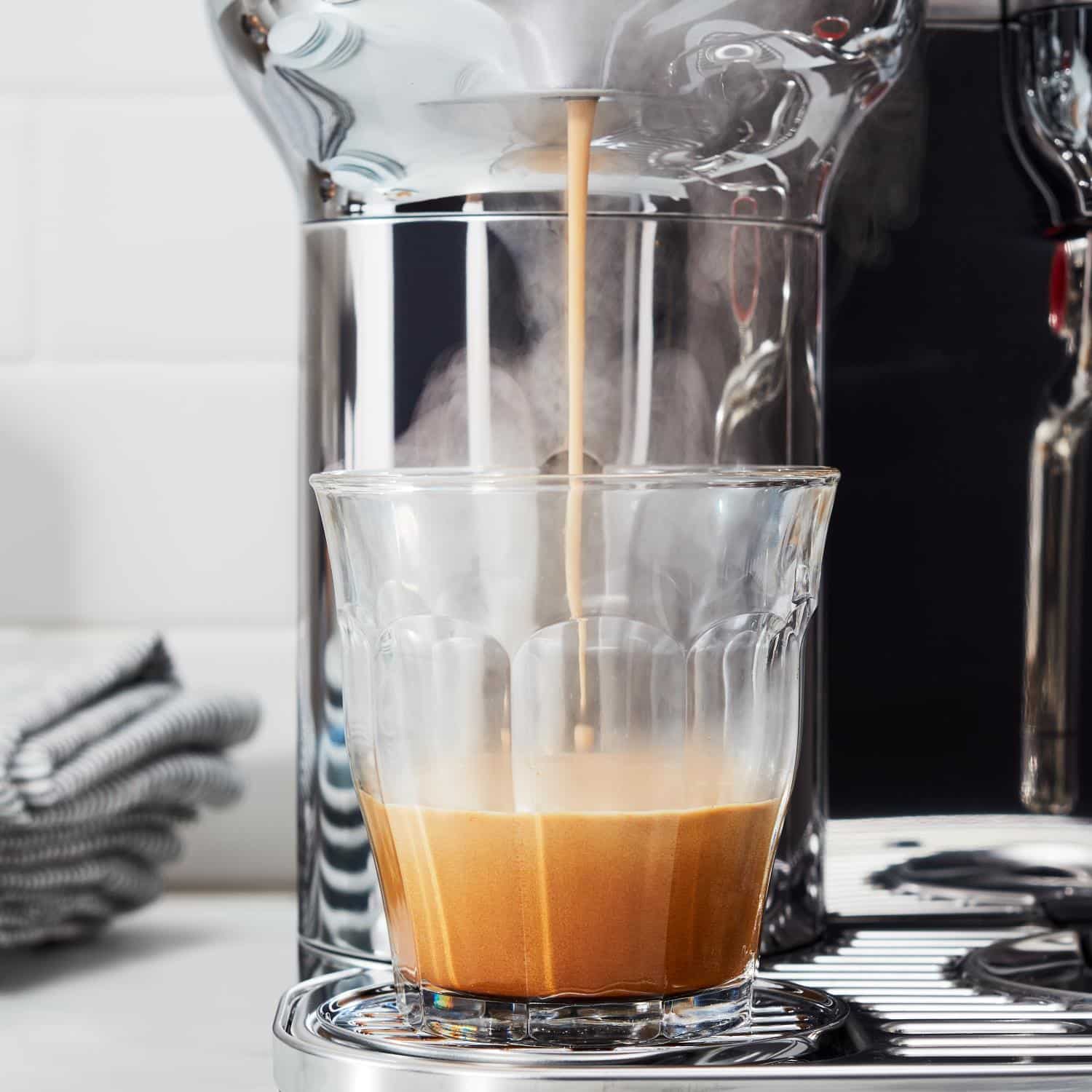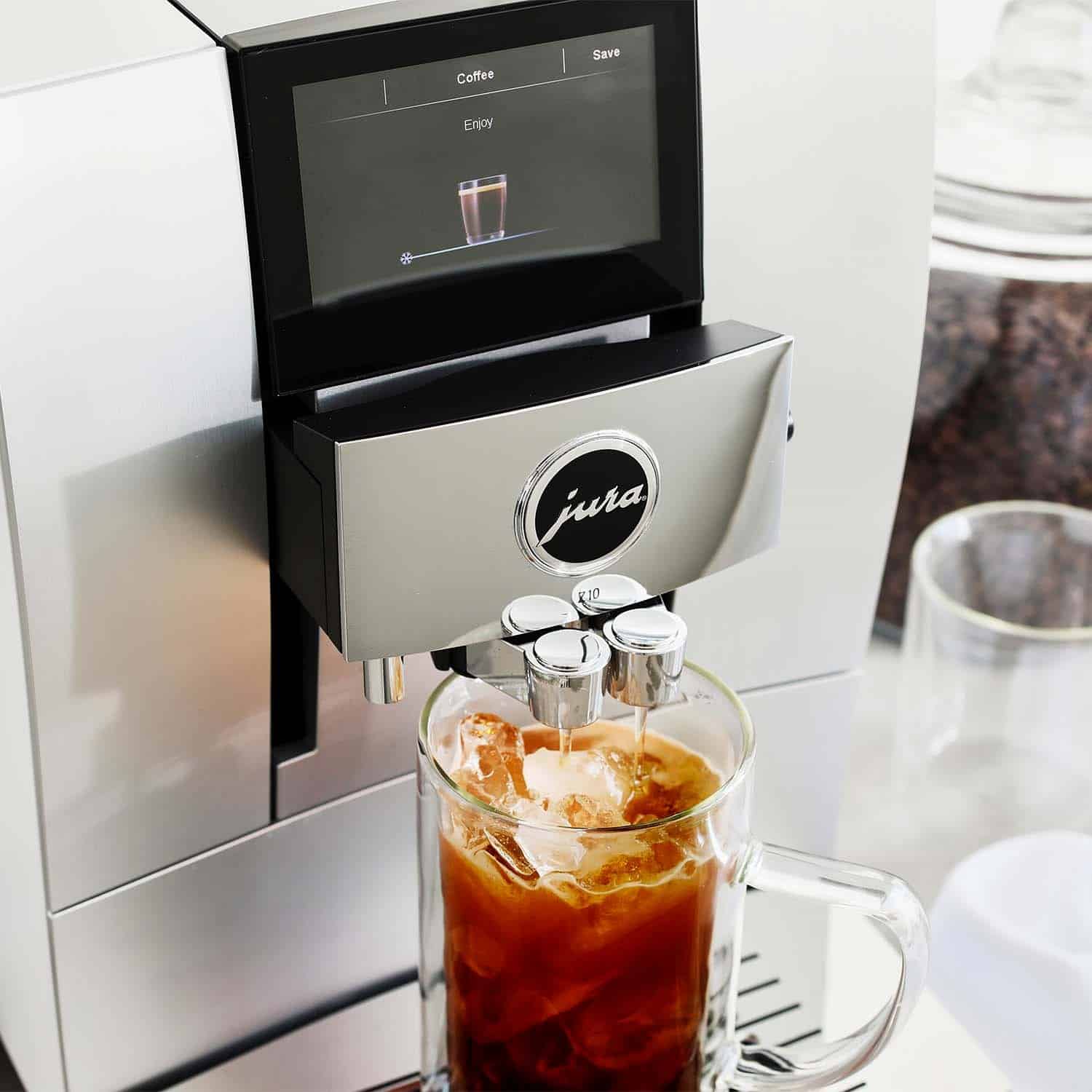Become the Hostess With The Mostest


Cold brew coffee has become a popular choice among coffee enthusiasts for its smooth, mellow flavor and reduced acidity compared to traditionally brewed coffee.
Its refreshing quality makes it a favorite in warm weather, yet its rich, robust profile ensures it can be enjoyed any time of year, too. The best part? With a few simple tools and some patience, you can make delicious cold brew right at home. This process not only allows you to customize the strength and flavor to suit your preferences, but also offers a fun and satisfying way to experiment with different coffee beans and brewing techniques.
In this article, discover what cold brew is and what you need to make cold brew coffee at home— including the tools, ingredients and steps required to craft a smooth cup of joe in your own kitchen.
Hungry for more? Our Coffee & Espresso Collection has everything you need to kickstart your day! From manual espresso machines and drip coffee makers to French press and pour-over, you’ll find just what you need for that perfect cup o’ joe.

Cold brew coffee is a method of brewing that involves steeping coarsely ground coffee beans in cold water over an extended period, typically anywhere from 12 to 24 hours.
This technique differs significantly from traditional hot brewing methods. While both methods aim to extract flavor and caffeine from coffee beans, cold brew utilizes time rather than heat to achieve this goal.
Cold brew and iced coffee are not the same thing.
Iced coffee is essentially hot coffee that has been cooled down and then served over ice. Because it’s brewed quickly using heat, iced coffee retains the acidity and flavor profile typical of hot coffee. In contrast, cold brew offers a unique taste due to its prolonged extraction process and absence of heat.
Before diving into the brewing process, ensure you have all the necessary tools and ingredients on hand for a seamless experience:
Grind your beans to a coarse consistency, similar to coarse sea salt. This size is optimal for slow extraction, which is key to achieving the signature smooth, sweet flavor of cold brew without any bitterness.
Generally, a ratio of 1:8 coffee-to-water by weight is recommended (for example, 125 grams of coffee to 1 liter of water). Adjust this ratio to make your cold brew stronger or milder, according to your personal taste. Ensure that the grounds are fully saturated by stirring thoroughly after adding water.
Seal or cover the container and let it steep for 12 to 24 hours. The steeping can be done in the refrigerator or at room temperature. Refrigeration steeping makes a smoother brew and is less likely to develop off-flavors.
Once steeping is complete, strain the mixture through a cheesecloth or a fine mesh strainer to remove all coffee grounds. For the smoothest brew, consider straining several times or using a paper coffee filter after the primary filtration.
Transfer the cold brew concentrate to a clean, sealed container and store it in the refrigerator. Properly stored, the concentrate will stay fresh and flavorful for up to two weeks. To serve, dilute with water or milk according to your preference, usually starting at a 1:1 ratio.

For those who prefer a more straightforward approach or plan to make cold brew coffee regularly, investing in a cold brew coffee maker can simplify the process and ensure consistent results.
Cold brew devices or machines are designed specifically for making cold brew, often featuring integrated filters and simple release mechanisms that allow the coffee to be easily separated from the grounds without additional tools. Some advanced models can even automate the steeping and filtration processes, making them almost entirely hands-off.
Although using a cold brew coffee maker offers added convenience and consistency, the core process of steeping coffee grounds in cold water for about 12 to 24 hours is essentially the same, whether using a machine or a simple jar. The steeping duration depends on your preferred strength and taste but extending beyond 24 hours can result in over-extraction and bitterness.
Cold brew coffee makers come in various designs, including automatic and manual options. Automatic models typically handle everything from steeping to filtration, while manual models, such as mason jar attachments or French press-style brewers, require a bit more hands-on involvement.
When looking at cold brew coffee makers, consider how much coffee you plan to make at a time. Some cold brew coffee makers are designed for making single servings, while others can produce several liters of coffee concentrate. You’ll also want to look for coffee makers made of durable, nonreactive materials like glass and stainless steel to avoid flavor retention and ensure long-lasting use.
Even with a straightforward process like cold brew, occasional issues can arise that affect the quality of your brew. Here are some common problems and how to address them:
If your cold brew tastes bitter, it may be due to over-extraction:
A cold brew that’s too weak could be a result of under-extraction:
Sediment in your cold brew can be unpleasant and detract from the smooth texture:
Hungry for more? Our Coffee & Espresso Collection has everything you need to kickstart your day! From manual espresso machines and drip coffee makers to French press and pour-over, you’ll find just what you need for that perfect cup o’ joe.
Join The Conversation